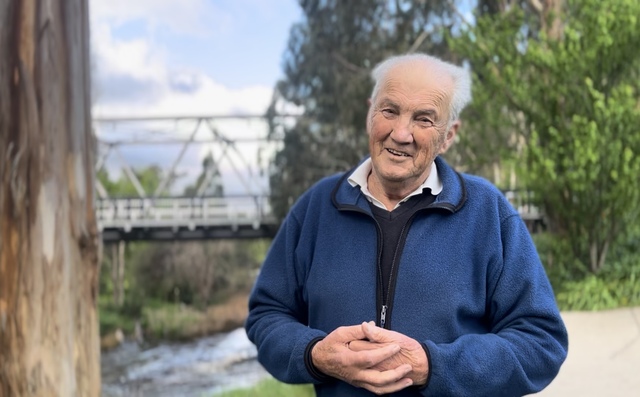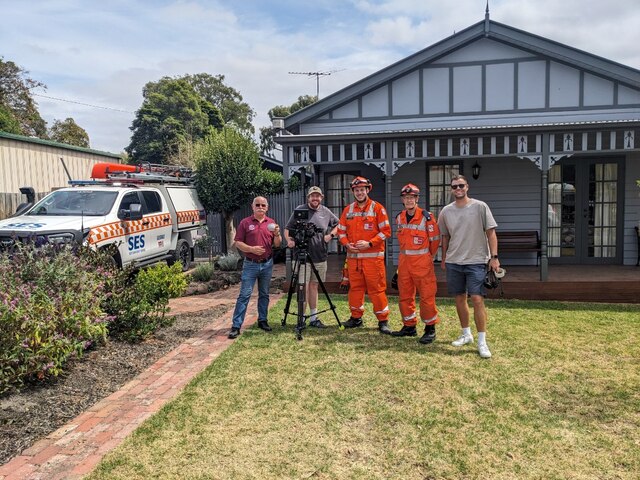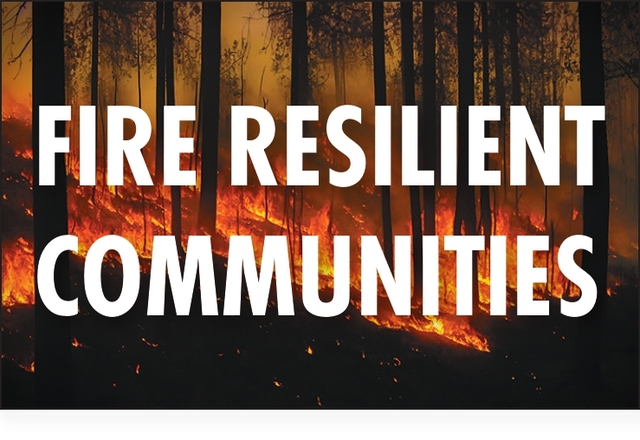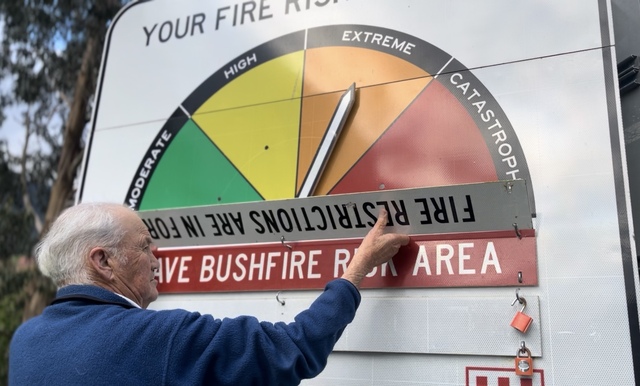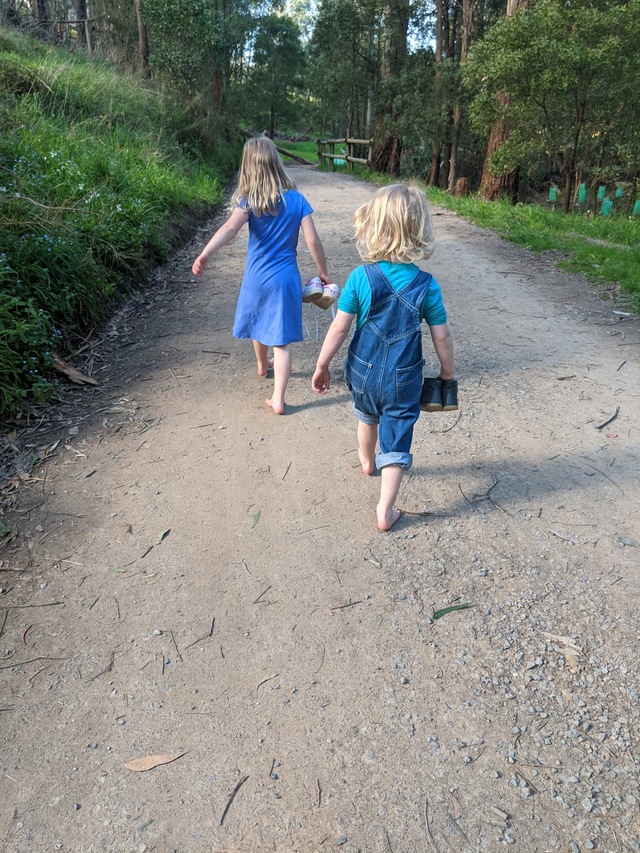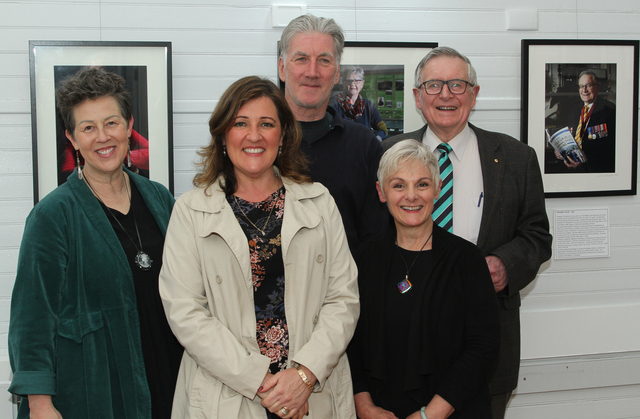“Meet in Montrose at midday.”
The slogan was developed by the Montrose Township Group after the 2021 storms to ensure that locals know where to go and what to do in an emergency.
Township groups play an immense role in providing and organising resources, shelters, information and action plans as well as connecting local communities.
Often born from the occurrence of past emergency events, township groups reach beyond the scope of bushfires to form solutions such as emergency meeting places and community hubs, which are vital elements in ensuring the safety of local communities.
Chelsea Cooper is a part of the Montrose Resilience Committee, a subsect of the Montrose Township Group.
The Montrose Resilience Committee is a group of local volunteers all with different skill sets in natural disaster and other emergency preparation and recovery.
Ms Cooper said, “Our main role is to make sure the community is informed of potential weather-related risks and that there is enough information out there on what we can do as communities to support one another and prepare for disasters, especially prolonged power and telecommunication outages.”
“We try to bring the community together as much as possible so we’ll organise community group networking events where we invite people to come along and provide scenarios, like a high heat warning or a storm and explore what kind of assets we have in our community to combat these example scenarios.
“We recognise that there is a role in community, to make sure that we know each other, that we reach out to each other and that we care for one another, because when big events occur, emergency services might not be able to get to us quickly.”
It is not just physical assets, but also skills and connections that may help communities recover if and when emergency events occur.
Ms Cooper said, “We have recently received an AusNet ready and resilient education grant that has enabled us to engage a professional production company and bring together community groups and leaders to produce a series of small videos that talk through what kind of things we can do to prepare for events such as storms or high heat events, and what kind of things we need to do when we think about the potential for prolonged power outages.”
The Montrose Resilience Committee has a checklist of things locals can do during the occurrence of a natural disaster or emergency event.
Ms Cooper covered some of the items on the checklist and said, “It is about making sure that in the event of an upcoming natural disaster, we have our power banks, our batteries and our devices charged.”
“If locals have a generator, they can make sure it’s up and running. We also need to ensure we are all connected to the right information sources so we remain well informed,” she said.
“Such information sources include things like the VicEmergency App in particular, and the SES is another great space to get information updates in the middle of an emergency. The other thing that we’re really big about is making sure locals also check in on their neighbours, especially people who might be more vulnerable.”
The Montrose Resilience Committee also share updates from the VicEmergency App and Montrose fire brigade.
Ms Cooper said, “When something is happening, our role is to make sure that people are pointed to the right information sources so they know what to do.”
It is not just the major storms in 2020 and 2021 that prompted action from the Montrose Township Group and its branches. The fire that burned through Dr Ken Leversha Reserve earlier this year also taught the Group much about the local community’s needs when it comes to responding to fire.
Ms Cooper said, “Most of us didn’t get any sleep on the night of the fire, so emotions were very high during the community meeting that was held afterwards.”
“We were trying to figure out how things could have been different, because the fire really ramped up around midnight that night, and we think everyone went to bed, thinking it was contained, and people were still asleep, when really they needed to evacuate,” she said.
“There was a lot of discussion and many lessons learned after that fire event. Especially in terms of how we need to communicate in future. Locals did not know that when a fire is said to be contained, it does not mean that it is safe to stay near it.”
Ms Cooper also outlined the importance of using one’s senses, rather than wholly relying on emergency apps and official messaging.
“If you can smell smoke, don’t wait for an authority to tell you to leave. How we support one another to recover from disastrous events is another important aspect,” Ms Cooper said.
Because the fire was contained in a specific part of our town, some people were far more impacted than others.
“We worked with the Council to make sure that there were support services like the Victorian Council of Churches and the Red Cross door-knocking in areas that were more likely impacted than others, just to check to make sure people are OK and to provide opportunities for us to come together and to be with one another.”
The October 2020 and 2021 storm events were a precursor to much of the Montrose Township Group’s actions.
Ms Cooper said, “A lot of us ran out of power and we started hearing stories of people in the middle of the night took the risk of getting in their car to drive to their child’s house, such as elderly people that got in their car, drove to a different suburb because they weren’t safe enough to ask their neighbours for support.”
“Anytime anyone has the opportunity to get involved in any kind of group, it can be a group like a resilience committee or your local book club, those are the spaces where we start to get to know one another.
“It can be so hard sometimes when people are working or have busy lives, that we don’t focus on the fact that the people within our communities are going to be the ones that we draw on the most when times get really hard.”
Ms Cooper noted that any form of community participation leads to the development of stronger community connections.
The Montrose Resilience Committee has a resilience plan that was assembled in 2021. You can view this on their website below.
Towards the Upper Yarra Valley, a longstanding group of local volunteers is working together to protect and prepare their local community for emergencies.
Following the 2009 fires, which devastated Marysville and its surrounds, the Yarra Ranges Council called for locals to attend a public meeting and discuss how the local area should be preparing for such catastrophic events.
From this meeting, a consultative group was formed from members of Warburton township. A council officer led the group for the first few meetings, but shortly branched off to become the Warburton Emergency Planning Group.
Member of the Warburton Emergency Planning Group Gordon Buller said, “Our group made a list of all of the biggest threats to Warburton and its residents and bushfires were voted as the area’s number one risk, trumping floods and storms.”
“We realised that we did not have access to good information on total fire bans, such as when and where they were occurring.
“This led to us appealing to get a Fire Danger Rating sign put in town. They had been put in every other major town, and we didn’t have one, even though we are rated as having the worst fire risk in Victoria.”
The sign is rotated and monitored by Mr Buller and other local volunteers who take time out of their days to change the sign at either six o’clock in the morning or ten o’clock at night, depending on when the latest fire rating comes through.
The work of the Warburton Emergency Group does not stop at Fire Danger Rating signs, but rather expands out to a wide variety of initiatives.
“Our old fire siren was still situated in the Warburton town, so we have helped that get set up so that it can be used by the incident control centre, which is a hub for people from many different agencies to come together and decide whether an event is deemed an emergency and if it will impact Warburton,” Mr Buller said.
“We also discovered that the emergency 774 radio signal doesn’t make it through to Warburton, so we got a government grant to have the signal be received and retransmitted to us from the top of Mount Victoria via the FM channel 96.1.”
Setting up a resilience centre where residents can go to seek information, charge their phones, eat, have a shower and meet other people is another key project of the Warburton Emergency Planning Group.
Mr Buller said, “Because our town is sort of strung out, we have selected multiple possible places for a resilience centre. One of them is the bowling club because it has a battery backup for power that lasts for three days, so people can charge their phones and cook meals.”
“The resilience centre needs to be open 24 hours a day and have a battery radio, toilets, showers and a kitchen.”
The Yarra Ranges Council have now arranged a plug-in facility that is powered by a generator that can last for over three days.
Another location being considered for a resilience centre by the Warburton Emergency Group is the Redwood Centre.
Most of the Warburton Emergency Group’s discussion heavily involves community consultation, and Mr Buller encourages residents to participate in the group wherever possible, as well as attend their local CFA open days and have a backup plan for when emergencies occur.
Five minutes down the road, the Millgrove Residents Action Group has been established for 20 years.
Born out of a lack of community representation and some negative press about the safety and liveability of the township, the group’s primary goal is to promote Millgrove as a safe and enjoyable space for residents.
Vice president Phil Pomaroff said, “We have launched and combined three plans, the Resilience Plan, our Community Plan and our Future Vision Plan to come up with 46 projects that help us achieve what we want the Millgrove township to become.”
“Resilience is a key aspect for us, as Millgrove is the second most fire-prone place in Victoria, after Warburton,” he said.
“We are also vulnerable to floods and swelling of the Yarra River as well as damage from storms.”
Mr Pomaroff noted that the Millgrove township was without power for five days during the 2021 storms and that it was this outage that prompted one of the Group’s 46 projects to focus on energy preparedness.
“One of our bigger projects is having reliable local renewable power that consists of three programs, one of which has been achieved at the community centre,” Mr Pomaroff said.
“We have now installed a solar battery thanks to a $277,000 grant from AusNet. That facility can now run if we lose power, so it can be a recovery centre for after an event.”
The community hub provides a place residents can go to charge their phones, get some food, use a bathroom and come together after an emergency event.
A program to help locals prepare their houses for fire season is another initiative of the Millgrove Residents Action Group.
Mr Pomaroff said, “One of the most important things is having fire guards in your guttering.”
“Most fires occur through ember attack, so having your roof protected and having guards to prevent embers from entering the house is vital.
“Making sure that the garden is not right up against the house and that trees are cut back from buildings is also important.”
On top of the above initiatives, the group also runs expos with the local CFA, has installed community defibrillators and has organised clean-ups along the river to reduce fuel loads.
“We also have an annual light show where we light up areas and incorporate history, performances, poetry, music and local entertainment. In April each year,” Mr Pomaroff said.
“The art of being resilient is having your community connected together.”
When it comes to responding to emergencies, township groups situated throughout the Yarra Ranges reiterate the importance of coming together and preparing as a community in the face of difficulty.
Visit the above Township Groups’ pages below.
Montrose Township Group: montrosetownshipgroup.org.au
Warburton Emergency Planning Group: warburtonemergency.org.au
Millgrove Residents Action Group: mrag.net.au

